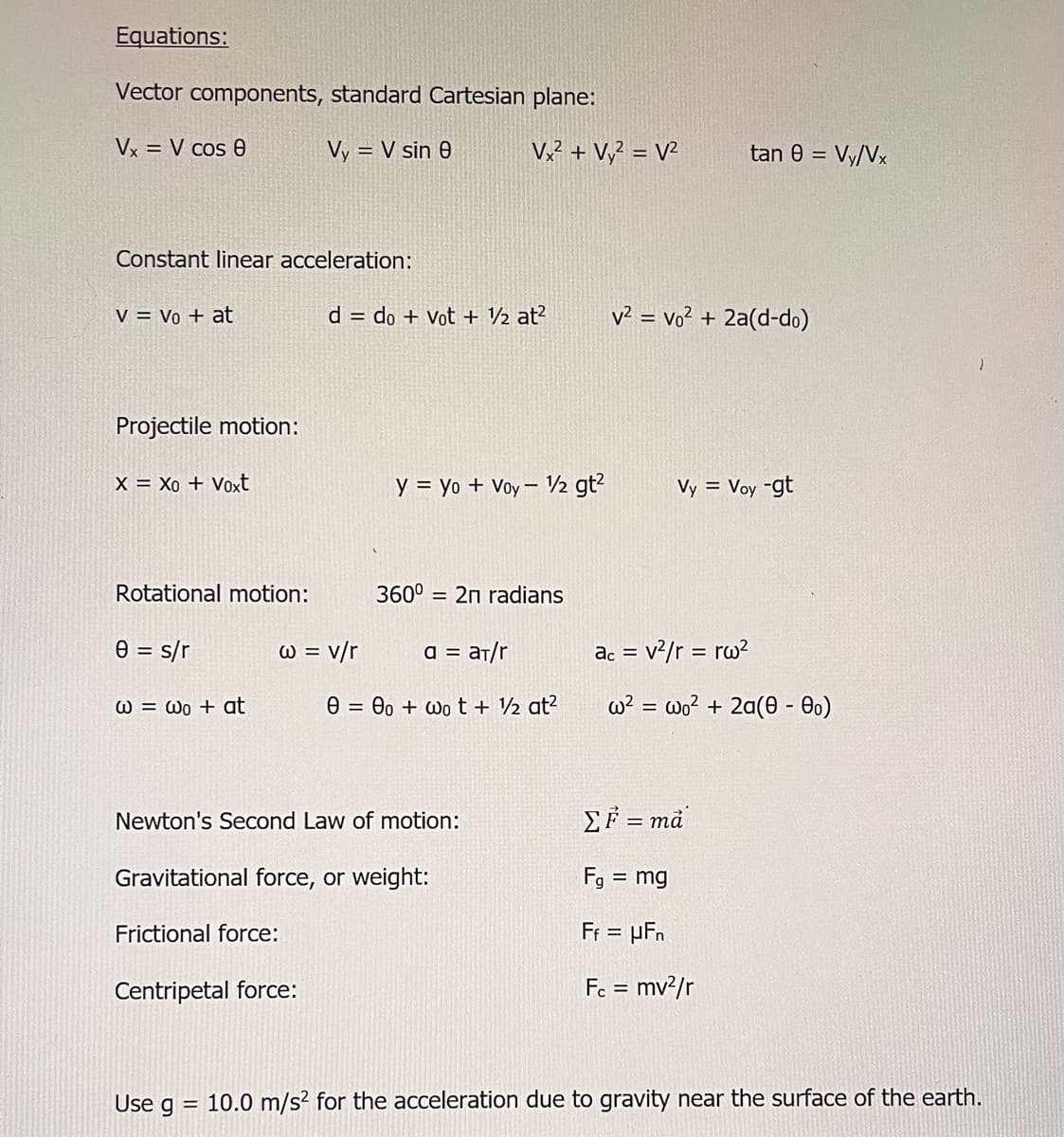A 40 meter long train it’s accelerating at a constant rate. If the front of the train it’s moving 30 m/s past construction work 150 meters from it’s starting point, how fast will the end of the train be moving when it passes him Use the equations provided please
A 40 meter long train it’s accelerating at a constant rate. If the front of the train it’s moving 30 m/s past construction work 150 meters from it’s starting point, how fast will the end of the train be moving when it passes him Use the equations provided please
Physics for Scientists and Engineers: Foundations and Connections
1st Edition
ISBN:9781133939146
Author:Katz, Debora M.
Publisher:Katz, Debora M.
Chapter2: One Dimensional Motion
Section: Chapter Questions
Problem 46PQ: In Example 2.6, we considered a simple model for a rocket launched from the surface of the Earth. A...
Related questions
Question
A 40 meter long train it’s accelerating at a constant rate. If the front of the train it’s moving 30 m/s past construction work 150 meters from it’s starting point, how fast will the end of the train be moving when it passes him
Use the equations provided please

Transcribed Image Text:Equations:
Vector components, standard Cartesian plane:
Vx= V cos 8
Vy = V sin 0
Constant linear acceleration:
V = Vo + at
Projectile motion:
X = Xo + Voxt
Rotational motion:
0 = s/r
@= @o + at
Frictional force:
w = v/r
Newton's Second Law of motion:
Centripetal force:
Use g
d = do + Vot + ½ at²
Gravitational force, or weight:
=
Vx² + Vy² = V²
y = yo + Voy - 1/2 gt²
360⁰ = 2n radians
a = aT/r
000+ wot + ½ at²
tan 8 = Vy/Vx
v² = vo² + 2a(d-do)
Vy = Voy -gt
ac = v²/r = rw²
w² = wo² + 2a(0 - 0)
ΣF = ma
Fg = mg
Ff = µFn
Fc = mv²/r
10.0 m/s² for the acceleration due to gravity near the surface of the earth.
Expert Solution
This question has been solved!
Explore an expertly crafted, step-by-step solution for a thorough understanding of key concepts.
Step by step
Solved in 2 steps with 2 images

Knowledge Booster
Learn more about
Need a deep-dive on the concept behind this application? Look no further. Learn more about this topic, physics and related others by exploring similar questions and additional content below.Recommended textbooks for you

Physics for Scientists and Engineers: Foundations…
Physics
ISBN:
9781133939146
Author:
Katz, Debora M.
Publisher:
Cengage Learning

Physics for Scientists and Engineers: Foundations…
Physics
ISBN:
9781133939146
Author:
Katz, Debora M.
Publisher:
Cengage Learning